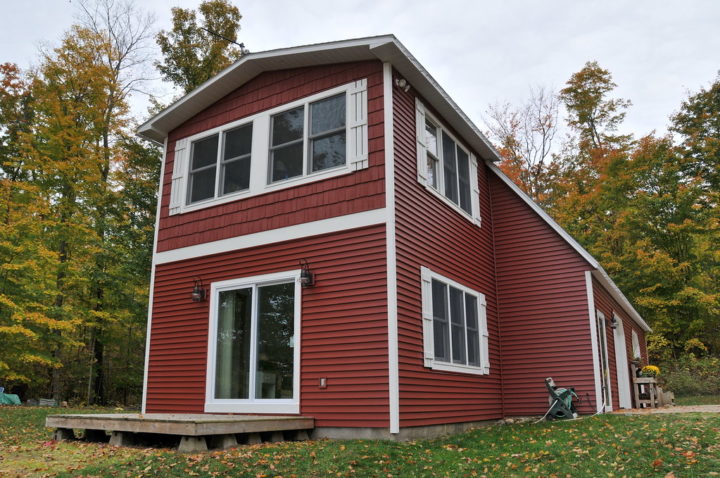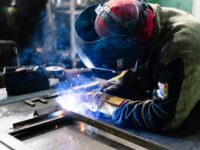The following contribution is from another author.
Vinyl siding is considered one of the best and most cost-effective ways to protect exterior walls from weather damage. It’s just a long sheet that covers all or part of your home’s exterior walls, and it has the advantage of being very easy to work with because vinyl isn’t very heavy.
Vinyl is also available in many styles and colors, with a wide array of textures and features, making it possible to find vinyl siding that fits the style of your house. It’s also affordable, easy to install and maintain, and durable—it won’t erode from most forms of weather damage. Vinyl is most effective when used as an exterior covering for a home with a brick or stucco exterior because it can protect the walls from moisture damage.
One thing you should know before starting on your project: how valuable your time is. It’s worth looking into hiring someone who specializes in this type of work instead of trying to do everything yourself if you don’t have sufficient knowledge and experience. This article refers to most roofing companies in St. Louis, Mo can help you figure out what type of vinyl siding will best suit your needs, but it isn’t intended to be a comprehensive guide. Vinyl Siding Is Very Durable and Comes in Several Types
Durability
The first step is deciding which type of vinyl siding to use in determining how long you plan on staying in your home. Most vinyl manufacturers make a variety of grades of siding, which range from low-quality and affordable to high-end products. Knowing what type of vinyl is best for your needs will save you money and time in the long run.
Types of vinyl siding
Vinyl siding is available in three main types.
1-Regular
This is the most common type of vinyl siding and it can easily be found in any home improvement store. The base material of regular vinyl siding is polyvinyl chloride, which makes it very durable. It’s also resistant to rotting and insect infestation, but its main drawback is that underneath the decorative sheet is a thin layer of foam rubber. This means that if you live in an area where there are heavy rains or strong winds, water can get in behind the siding and cause problems with your home’s exterior walls. Regular vinyl siding is best used in areas with average rainfall.
2-Fiber Cement
This is a more expensive type of vinyl siding because fiber cement itself costs more than regular PVC. Fiber cement is made from Portland cement and wood fibers, making it much tougher than regular siding. The main benefit of this type of siding is that its texture looks like the stucco covering on many homes. However, one major drawback is that fiber cement fades in direct sunlight and it’s also vulnerable to chipping and flaking.
3-Stucco-Look
This vinyl siding variation has a textured surface that closely resembles real stucco. It’s very popular because it can be used as a replacement for traditional stucco without having to spend a lot of money on materials. One drawback is that this type of vinyl requires more maintenance than other options because you have to apply a special coating every few years to protect it from UV rays and weather damage.
What are the key benefits of vinyl siding?
- No need for repainting
- Durable PVC material that will not be damaged by mold, rust, or termites
- The vast selection of designs and colors available to choose from makes it easy to match the siding to your particular house style and preference
- Maintainable and easy to clean
- Cost-effective when compared with traditional wood siding materials such as cedar, redwood, or fiber cement, especially when thinking about the hassle of painting
- An eco-friendly product that is made from recycled materials
- Several energy-efficient options are available that provide greater comfort and savings
- Vinyl siding is rated to resist hurricane-force winds, so it is a good choice for the coastal region
Who should avoid vinyl siding?
Vinyl siding is a wonderful investment that can protect and add value to your home for the vast majority of homeowners. However, there is one exception to the rule. If you reside in a historic neighborhood with carefully preserved homes, vinyl siding may not be the best choice. In this case, choosing vinyl may harm your home’s value if it stands out. It’s best to stick to whatever style and materials are traditionally employed in historical communities.
Installation
Installation is what makes or breaks vinyl siding. The choice of materials and the installation technique are crucial factors when it comes to your building’s durability, appearance, and energy efficiency over time. There are several styles of siding with different installation methods; most require some sort of nailing to stucco, brick, wood, or masonry/vinyl siding. Nailing siding to these surfaces is not like nailing wood, and an experienced contractor will know how securely fasten the vinyl to all sides of the board. Vinyl siding installation varies with the style of siding; your building should receive a professional installation.
No matter what type you choose, all types are available in self-sealing and non-self-sealing seams. Self-sealing seams are much more watertight than non-self-sealing types, but they will also leave a ridge that reveals the seam to all your visitors. Non-self-sealing seams lay flatter against your home’s exterior but could increase the chance of small leaks.
Further concerns about vinyl siding include:
The difficulty of painting it, as well as its lack of historical character. Due to mid-20th century technological developments such as vinyl siding and pre-primed wall coverings (the latter originally made out of canvas), which evolved into more aesthetically pleasing products that could be painted, the exterior surface of a house was no longer necessarily made of wood, stone or stucco.
















